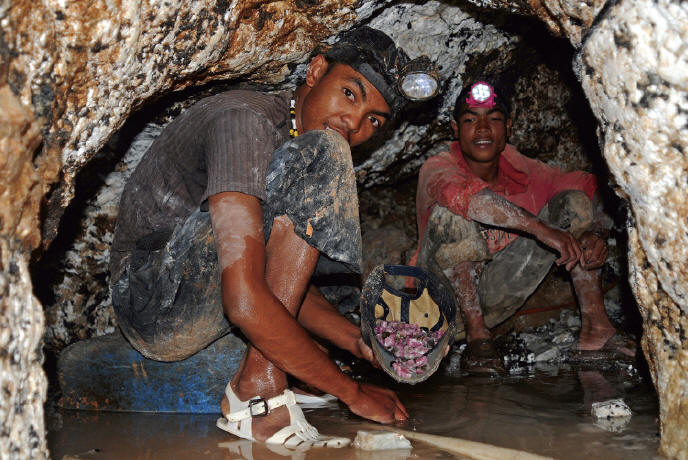
Miners working in narrow tunnels following pegmatite collecting fragments of gemmy rubelites. M. Lorenzoni photo.
However in June 2012, a group ofseven local miners directed by a wellknown and experienced miner namedPieró started working a pit. The prospect followed traces of polychrome tourmalinewhich formed a thin vein dipping ata high angle into the kaolinized pegmatite.
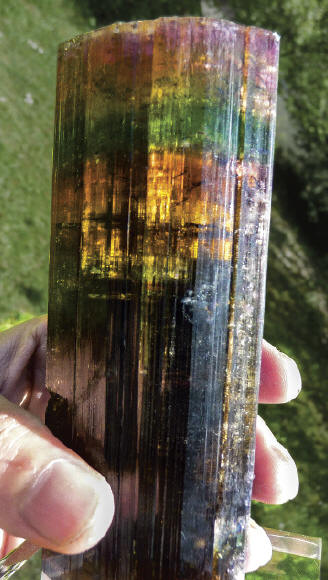
Big, gemmy multicolor liddicoatite crystal from the find, weight 530g. K. Neumann collection and photo.
During the second week of June,at a depth of about 8 meters the thin vein brought the miners to a coarse grainedsub-horizontal partially kaolinized, pegmatiticlens which was rich in clevelanditeaggregates and large blades ofpink-purple lepidolite. Digging insidethis lens they broke into a large pocketfilled with whitish clay, from which theystarted recovering large crystals of polychrometourmaline. During the first dayof working the pocket, they found over 30kg of crystals, including one specimen 26cm long weighing 4.6 kg.
This crystal hadexceptionally sharp and lustrous facesand strong color variation (see descriptionbelow). It is one of the two best polychrometourmaline crystals ever foundin Madagascar. The large size of the crystals from this pocket is completelyunusual for the locality and for this areain general.

Unique photo of miners inside the workings in Estatoby extracting one of the world’s finest crystals of liddicoatite. G. Rakotonirina photo.
Since the pocket extended in all directionsdowndip, the pit soon becametoo narrow and the pocket began to collapse.
Therefore, the next day they decidedto abandon the pit and to dig asecond much larger one nearby. Unfortunately,they were unable to keep thediscovery secret. A few days later whileworking the second nearby pit, they weresurrounded by other local miners whohad heard of the discovery and rushed tostart developing pits of their own.
In one week of hard work Pieró andhis team mined many crystals from thepocket, but since the cavity extendedhorizontally for several meters, at least two other groups of miners were alsoable to reach the same pocket from otherdirections. The three groups of minersfought over who would collect newcrystals from the pocket. In spite ofthis dispute, many more crystals wererecovered, including one weighing 5.2 kgof the same superb quality as the firstone. A large quantity of tourmalinerough of carving quality was also recovered.
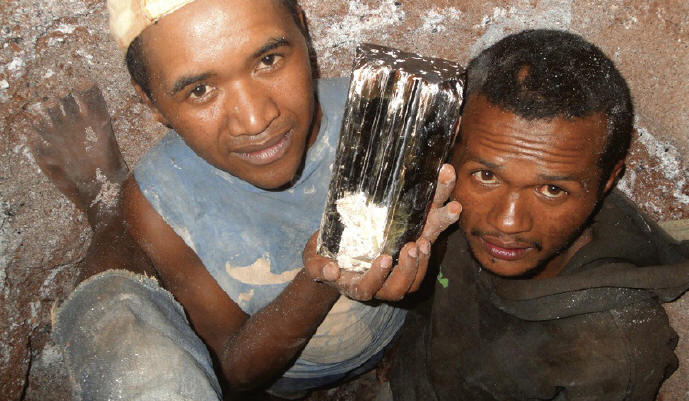
Unique photo of miners inside the workings in Estatoby extracting one of the world’s finest crystals of liddicoatite. See photo of this crystal in the left lower corner of this page. G. Rakotonirina photo.
The total production of the pocketwas about 70 kg of crystals, with individualcrystals weighing from a few hundredgrams to over 7 kilos, and about 300kilos of carving quality tourmalinerough. Only a small number of the recoveredcrystals were collector quality.
Many were too dark or were naturallydamaged or incomplete.

Miner lowered down to the shaft . J. Gajowniczek photo.
During a single two week period,over 200 miners came to work in the Estatoby an area of less than 1000 squaremeters. At least 300 more people came tothe area trying to take advantage of thenewly discovered tourmaline. Manyprimitive shops and bars grew up aroundthe workings. However, most of the productionof the pocket was controlled bylocal dealers who had entered into partnershipwith the miners. During the nexttwo months, about 1.5 tons of rough tour-maline were recovered and traded locally,but only a very limited quantity ofsmall (up to a few hundred grams) tourmalinecrystals was found in some smallsatellite pockets.
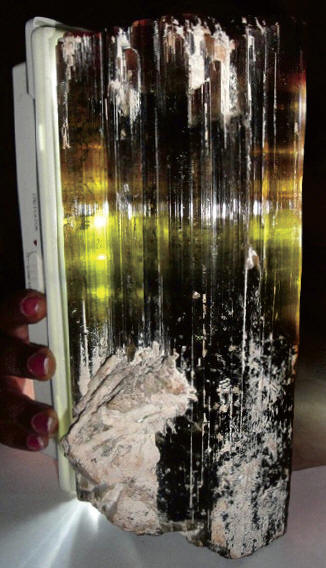
23 cm in length (sic!) and over 5 kg crystal of liddicoatite, one of the best from the find, shown also at the photos above when extracted. Because of its thickness, it is very difficult to backlight to see strong color zonation. J. M. Shaw collection. G. Rakotonirina photo.




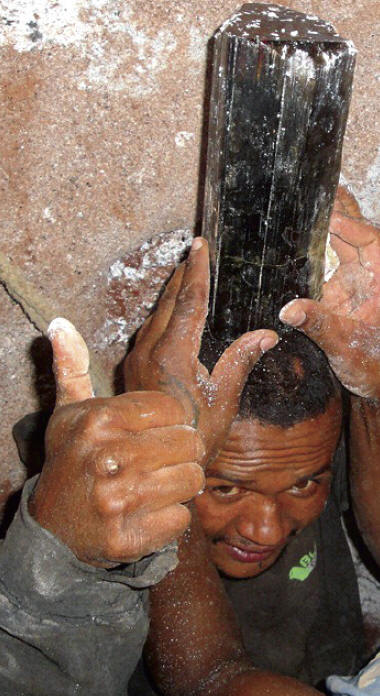




 YueGongAnBei 44051102000467
YueGongAnBei 44051102000467


 |
|